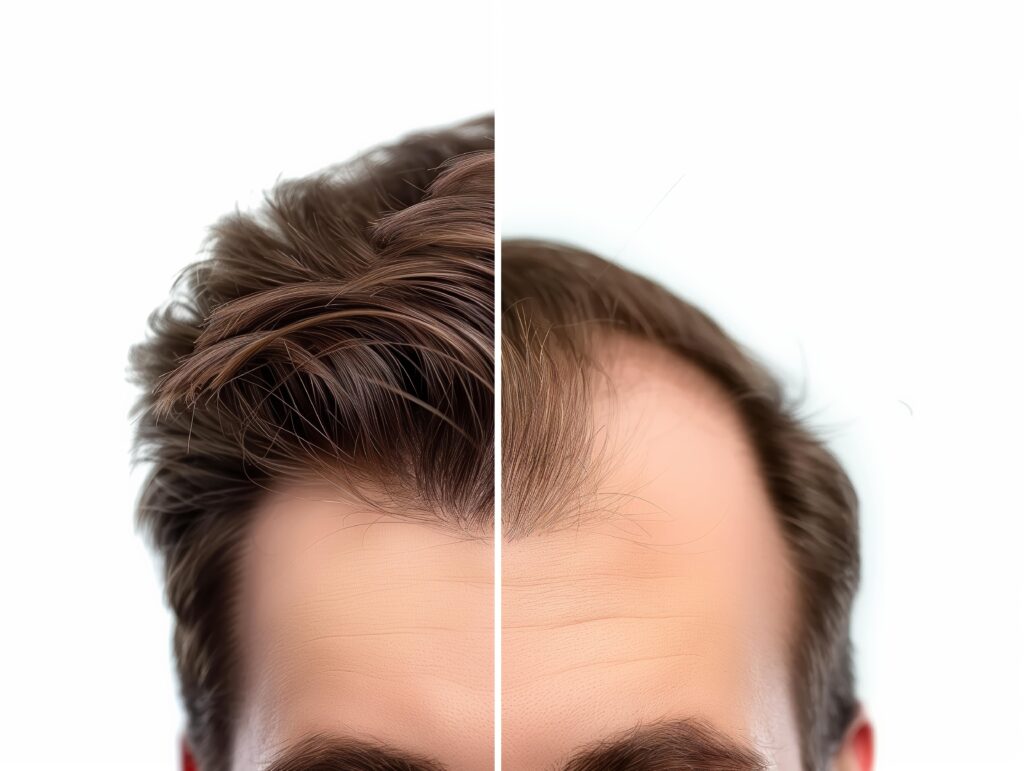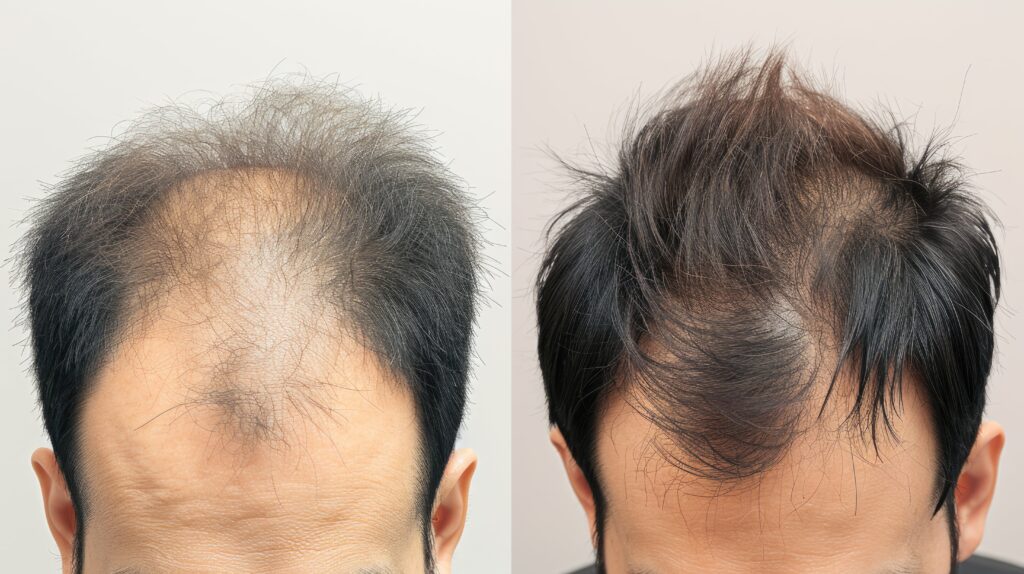Dense, strong hair contributes to a youthful appearance. When hair thins, and the process accelerates, it becomes more obvious as time goes on. At first it is not very noticeable, but near the end of the process the hair starts to look thin and weak. Eventually, even the scalp is visible. One option to retrieve hair density is hair transplant.
Many people find this very upsetting. The result can be issues with self-confidence or with social withdrawal. Loss of hair density can, for some people, lead to a lower quality of life.
What is normal hair density?
Hair density is the number of hair follicle units located per square centimetre on the scalp. Each follicular unit contains up to five hair roots. On average, people with healthy, strong hair have 70 to 110 units on each square centimetre of the scalp.
Most people have between about 800 and 1300 hairs per square centimeter on the scalp. Usually, the density is greatest at the crown of the head, at the back and top of the scalp.
Genetics primarily determine hair density, which also varies according to ethnicity. Black people usually have the lowest hair density, while white people usually have the most. People of Asian descent are typically somewhere in between.
White people have the greatest variation in natural hair colour. People with red hair have the lowest, while brunettes and black-haired people have a higher density. Blondes have the greatest hair density, but their hair typically has a thinner structure.
What can reduce hair density?

It is normal for hair density to reduce with age. Fortunately, a mildly reduced hair density is usually not obvious, and it is only after severe thinning that the effects are visually apparent.
Poor diet or stress can reduce natural hair density. Usually, hair loss in these circumstances is reversible. Reducing stress or improving diet typically allows hair to grow back over time.
The most common cause for dramatic hair density loss is genetic male and female pattern baldness. In men the loss of hair density is visible firstly at the temples and then progresses backwards up the scalp. In women, hair loss spreads more evenly across the scalp.
What treatments can work for increasing hair density?
The only permanent solution to decreasing hair density is a hair transplant procedure. Using hair grafts from a high density donor area (usually the back of the head), the hair transplant surgeon will replace lost density.
There is no scientific proof that other methods such as hair products or vitamin supplements are effective. Some people find them effective, but researchers have not proven the science behind their effectiveness.
What is required for a good result with a hair transplant hair density?

An experienced hair surgeon should perform hair restoration surgery to achieve a good result. Innovative methods and high-quality instruments are instrumental in the success of own hair transplantation. Ideally, the surgeon transplants enough hair roots per square centimeter during the procedure to achieve higher hair density.
However, it is not enough just to cover bald spots with hair transplant surgery. Places where the hair is already thinning are also suitable recipient areas for a hair transplant. A good surgeon will adjust the treatment to individual parts of the head, giving hair density that looks natural all over the scalp.
The surgeon must insert all follicles according to the direction of hair growth and natural density. The best surgeons will also use hair grafts of just one hair at the front hair line. This gives the most natural-looking hairline. Multi-grafts of between two and five hairs are more appropriate for the top and back of the head.
Formerly, the most widespread method for repairing hair loss was the FUT method (Follicular Unit Transplant). However, today the most modern techniques for maximising hair density are FUE (Follicular Unit Extraction) and DHI (Direct Hair Implantation).
Dr. Levent Acar – specialist in hair restoration and reversing thinning hair
Dr. Levent Acar performs hair transplants with the latest Sapphire DHI method at Cosmedica Clinic. This method combines all the advantages for hair transplant density of the FUE Sapphire and DHI techniques.
Using Sapphire DHI, the survival rate of the hair roots is over 90%, as they are only separated from the body’s blood supply for a short time. This is good for subsequent hair density.
The wound healing process is faster. Micro-scars are covered by regrowing hair. After twelve months at the latest, the healing process is finished and strong hair grows. The new, dense hair is no longer affected by hereditary hair loss.
To find a permanent remedy for genetic hair density loss, a consultation with Dr. Acar at Istanbul’s leading clinic is a huge step in the right direction.
FAQ
Hair density is the number of hair follicle units per square centimeter on the scalp. Typically, people have 70 to 110 units per square centimeter, translating to 800 to 1300 hairs. This density varies by genetics and ethnicity.
Hair density naturally reduces with age, stress, and poor diet, which can temporarily thin hair. However, genetic male and female pattern baldness is the most common cause of significant hair density loss, affecting specific scalp areas.
The only proven permanent solution for hair density loss is hair transplant surgery using a determined number of grafts from high-density areas. Other methods like hair products or vitamin supplements lack scientific proof of effectiveness in increasing hair density.
A successful hair transplant requires an experienced surgeon, innovative methods, quality instruments, and proper follicle placement to mimic natural growth. Techniques like FUE and DHI are currently the most effective for achieving high hair density.
The healing process after a hair transplant using techniques like Sapphire DHI typically completes within twelve months. During this period, the micro-scars are covered by regrowing hair, and the transplanted hair becomes strong and naturally dense, no longer affected by hereditary hair loss.




